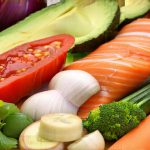Many people experience digestive discomfort after meals – bloating, gas, nausea, heartburn, even seemingly random stomach aches. Often, these symptoms are dismissed as ‘just part of life’ or attributed to specific foods alone. However, the way we combine foods might play a significant role in how easily our bodies can digest and process what we eat. Food combining isn’t about restrictive dieting; it’s about understanding how different food groups interact during digestion and making informed choices that support optimal digestive function. It’s rooted in the idea that our bodies don’t efficiently digest drastically different macronutrients simultaneously, leading to fermentation, gas production, and ultimately, discomfort.
The concept originates from early 20th-century naturopathic practices and has evolved over time with varying interpretations. While not universally accepted by mainstream nutrition science (and definitely not a substitute for addressing underlying medical conditions), many individuals have found relief from digestive issues by applying its principles. It’s important to approach food combining as an experiment – observing how different combinations affect your own body is key, rather than rigidly adhering to strict rules. The aim isn’t perfection but improved digestive wellbeing and a greater awareness of what works best for you. If you suspect certain food intolerances are at play, exploring those sensitivities can be very beneficial.
Understanding the Core Principles
The foundation of food combining rests on the premise that different foods require vastly different digestive environments. For example, fruits digest relatively quickly in an alkaline environment, while proteins need a highly acidic one. When we combine these drastically differing foods, our bodies can become confused and inefficient. This isn’t to say you can’t eat fruit with protein – it simply suggests that doing so frequently might overwhelm the digestive system. The focus is on minimizing simultaneous digestion of conflicting food groups.
One key element is prioritizing proper sequencing during a meal. Starting with fruits (on an empty stomach) allows them to digest and pass quickly, preventing fermentation in the presence of slower-digesting foods. Following this with vegetables, then starches, and finally proteins creates a more logical progression for your digestive system. This sequential approach minimizes digestive stress and optimizes nutrient absorption. It’s also important to remember that thorough chewing is crucial – breaking down food mechanically before it even reaches the stomach significantly aids digestion.
Another central concept revolves around avoiding combining fermentable carbohydrates with proteins. Foods like bread, pasta, or sugary foods combined with meat can lead to gas and bloating as the carbohydrates begin to ferment while the protein is still being digested. This isn’t about demonizing these food groups; it’s about understanding their digestive needs and creating combinations that support efficient processing. The idea is to allow each macronutrient to be properly broken down without interference from others. Understanding foods that trigger discomfort can help you navigate this process.
Fruit: The Solo Act
Fruits are best consumed alone, on an empty stomach, ideally at least 30 minutes before or 2-3 hours after a meal. This allows them to digest rapidly and efficiently without being held up by slower-digesting foods. Fruits contain simple sugars (fructose, glucose) which require little to no digestive effort beyond mechanical breakdown. When combined with other food groups, they can ferment in the stomach, leading to bloating, gas, and discomfort.
- Avoid combining fruits with proteins or starches.
- Melons are often considered a separate category and best eaten alone due to their high water content and rapid digestion.
- Dried fruits, while still fruit, are more concentrated in sugar and can be slightly different in how they affect digestion; moderate consumption is key.
Many people find significant relief from bloating simply by adopting this practice of eating fruit separately. Think about it: a slice of apple as a dessert after a heavy meal will take much longer to digest than if you enjoyed that apple as a snack between meals. This difference can be substantial for sensitive digestive systems. Remember, consistency is key – making small changes consistently over time yields the best results. If you’re struggling with natural remedies and dietary adjustments, seeking guidance is a good step.
Protein and Starch: A Balancing Act
Combining proteins with starches is generally considered more tolerable than combining fruits with proteins or fats. However, even this combination can cause issues for some individuals. The problem arises because both protein and starch require different digestive acids to break them down effectively. When eaten together in large quantities, the digestion process can be slowed, leading to incomplete breakdown and potential fermentation.
- Limit the quantity of starch consumed with protein. A small portion is usually better tolerated.
- Choose easily digestible starches like sweet potatoes or quinoa over complex carbohydrates like bread or pasta.
- Avoid adding sugary sauces or dressings to protein/starch combinations as this further complicates digestion.
Consider a grilled chicken salad – pairing lean protein with leafy greens and a small side of quinoa is likely more easily digested than fried chicken served with mashed potatoes and gravy. The lighter, simpler combination allows the digestive system to function more efficiently. Focus on quality over quantity, prioritizing whole, unprocessed foods whenever possible. How to plan balanced meals can be incredibly helpful in these situations.
Fats: Slowing Things Down
Fats are essential for health but also slow down digestion considerably. They delay gastric emptying – meaning food stays in the stomach longer. This isn’t inherently bad, but combining large amounts of fat with other food groups can exacerbate digestive issues. The issue is that while fats are being digested, other foods may be sitting and fermenting, leading to discomfort.
- Limit the amount of fat you consume at each meal, especially if you’re prone to indigestion.
- Choose healthy fats like avocado, olive oil, or nuts over processed fats like fried foods or margarine.
- Avoid combining high-fat foods with large portions of protein and carbohydrates.
A simple example: instead of a burger (protein + starch + fat) with fries (starch + fat), opt for grilled fish (protein) with steamed vegetables (alkaline) and a small side of avocado (healthy fat). This minimizes the digestive load and allows each food group to be processed more efficiently. Remember, mindful eating – paying attention to portion sizes and food combinations – is crucial for optimal digestion. Proper posture during meals can also aid in this process.
It’s important to reiterate that food combining isn’t a one-size-fits-all solution. These are guidelines, not rigid rules. The best approach is to listen to your body, experiment with different combinations, and observe how they affect your digestive wellbeing. If you have underlying health conditions or persistent digestive issues, consult a healthcare professional for personalized advice. You may also want to consider practical methods to identify your food triggers.


















